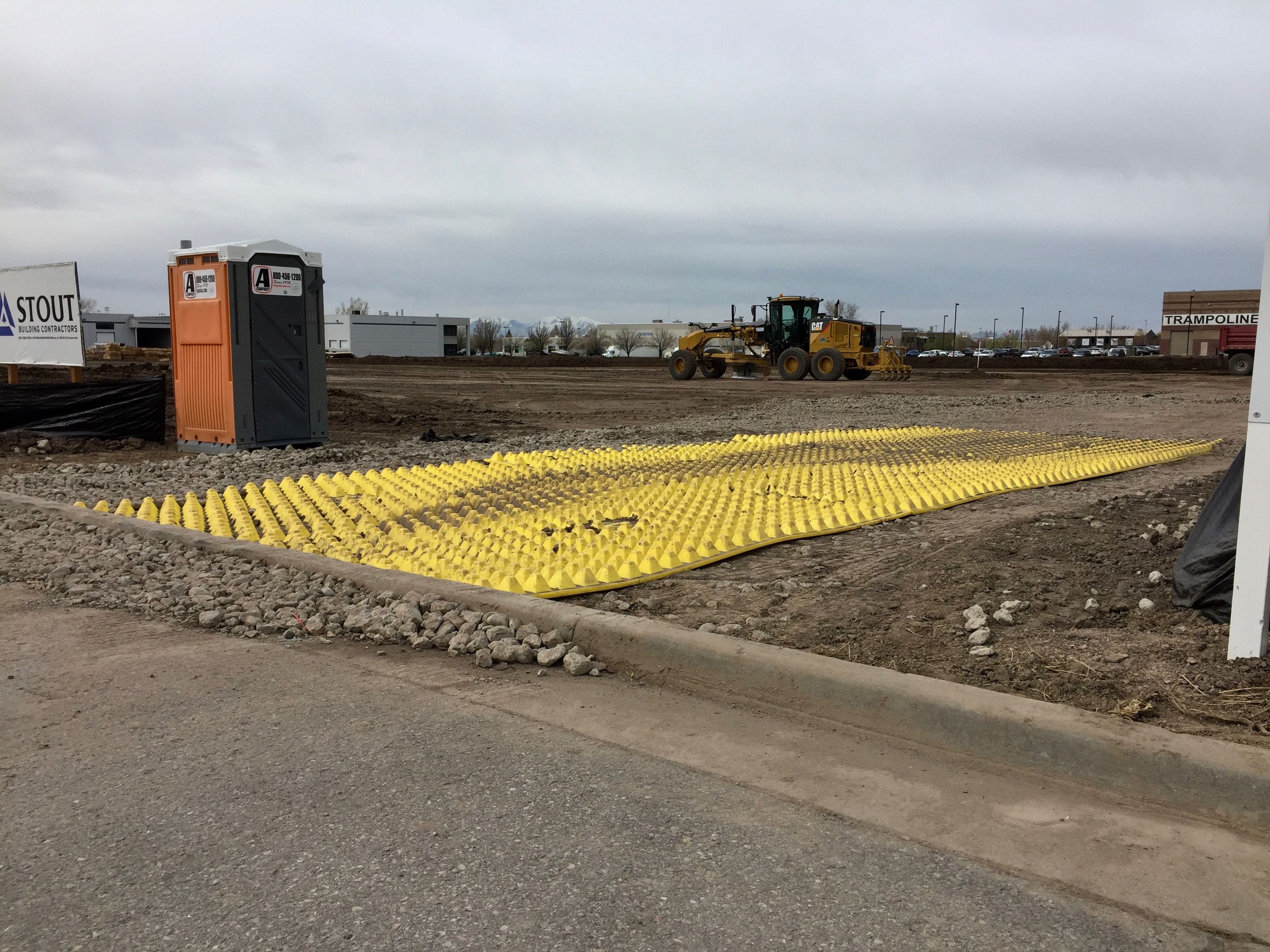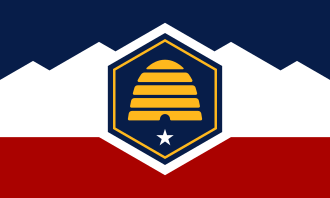Utah Stabilized Construction Entrance/Exit
The vast landscapes of Utah feature beautiful rock arches and formations, as well as extensive canyon systems. Utah's water supply relies heavily on snowpack in the Wasatch and Uinta Mountains, making careful management of this resource essential. As Utah's population grows, local governments are committed to protecting these vital water resources, which support ecosystems and attract visitors, thereby fostering a sense of shared responsibility.
Utah Department of Environmental Quality (DEQ)

The Utah Department of Environmental Quality has many divisions that protect and regulate air quality, drinking water, waste management/radiation control, environmental response, and surface water quality. The Clean Water Act of 1972 established the National Pollutant Discharge Elimination System (NPDES) permit program to protect the surface waters from excess sedimentation and contamination with harmful pollutants. In Utah, the Department of Environmental Quality (DEQ) administers the Clean Water Act through the Utah Pollutant Discharge Elimination System (UPDES). It requires permits for any stormwater discharges from construction, industrial, and municipal activities. For activities on tribal land, including Navajo land, permits are issued by the Federal EPA.
UPDES Construction General Permit (UTRC00000)
Any construction activities that will disturb one or more acres of land are required to obtain a UPDES Stormwater Permit. Many construction projects can apply for a Construction General Permit, which covers the common types of construction operations. If not eligible for coverage under the Construction General Permit, operators must apply for an individual permit for their construction activity.
Single lot residential projects that disturb less than one acre of land and are part of a common plan of development or sale may be covered under the Common Plan Permit (UTRH00000) in place of this permit. To obtain a Construction General Permit, operators must submit a Notice of Intent (NOI) as well as a Stormwater Pollution Prevention Plan (SWPPP). A Stormwater Pollution Prevention Plan (SWPPP) is a site-specific, written document that identifies potential sources of stormwater pollution at the construction site and specifies techniques to be implemented to reduce or eliminate pollutants in stormwater discharges from the site. The methods used to mitigate pollution are known as Best Management Practices (BMPs). The BMPs range in purpose from soil stabilization and water retention to reducing water flow, managing drainage, controlling erosion and sediment, and tracking vehicle movement.
Because water that enters stormwater drains is not processed or filtered before entering the surface waters, care must be taken during construction work to prevent excessive sedimentation and contamination. One of the first BMPs to be installed on a construction site is a Construction Entrance/Exit, which is designed to capture dirt, sediment, and other debris from vehicle tires before they leave the site.
Utah Stabilized Construction Entrance/Exit

The DEQ describes the use of a Stabilized Construction Entrance/Exit at construction egress points. The Stabilized Construction Entrance/Exit is designed to minimize sediment track-out onto impermeable roadways, where it can be washed down storm drains. One type of BMP technique that is used to stabilize a construction entrance is the use of a stone tracking pad. A stone tracking pad consists of an area that is excavated, then lined with a Geotextile fabric and covered with a 6-inch-thick layer of aggregate. The Utah Department of Transportation (UDOT) specification for a stone-stabilized construction entrance states that the entrance should be 50 feet in length and have a wide turning radius. The standard also includes a requirement for 2—3 inch aggregate for use on the entrances.
The entrance must be maintained to prevent the accumulation of mud and dirt on the tires of construction vehicles as they enter or leave a construction site from a public right-of-way, street, alley, sidewalk, or parking area. When entrances become buried in soil, they will require top dressing with aggregate. Additionally, the roadway may need to be cleaned with a shovel, vacuum, or sweeper to prevent tracked sediment from washing into storm drains or causing road hazards (water should not be used). When the project is complete, the rock and Geotextile fabric should be removed, and the soil should be remediated or reseeded to restore it to the original state.
If the rock entrance does not provide adequate containment, supplemental BMPs such as wheel washing must be used. When a wheel wash is used, a sediment basin must be installed to capture excess water runoff and prevent sediment from entering storm drains. Wheel wash systems can be effective, but require a source of water and power throughout the project.
FODS Track out Control Mats
FODS Trackout Control System is an effective and more cost-saving alternative to the traditional crushed stone construction entrance/exit or vehicle wash BMPs. FODS Trackout Control Mats are made of durable, high-density composite material and are designed to be reused for over 10 years. This modern approach to vehicle track-out containment has been demonstrated to remove up to 59% more sediment than traditional rock-stabilized construction entrances.
The unique pyramid design manipulates vehicle tires as they drive over the mats, removing mud and dirt from between the tire treads. The design offers many benefits over traditional track-out BMP solutions. The effectiveness of these mats can prevent the need for a supplement wheel wash station and sediment trap. Because the system does not use pressurized water, rock, or other consumable material, there is a very low operating cost and no requirement for a water source, power source, sediment basin, or additional rock refreshes. In addition, FODS eliminates the risk of tracking aggregate onto active highways and roadways in dual-tire vehicles, which can expel trapped stones at high velocity.

FODS can be installed without excavation and over various surfaces, including asphalt, soil, and concrete. The mats can be easily relocated and maintained without the need for heavy equipment or constant maintenance. Sediment is contained at the base of the pyramids while vehicles drive over the tops of the pyramids. After 2.5 inches of sediment build-up at the base of the pyramids, the mat can be easily cleaned and restored to full functionality using a skid steer with a broom attachment or manually using a FODS shovel.
A standard FODS 1x5T Layout is commonly used to replace crushed stone construction exits up to 70 feet in length, providing a wide turning radius for exiting traffic. FODS can help you effectively cut costs and save time. These durable mats are designed to withstand 10+ years of service.
By understanding Utah's stormwater requirements and choosing effective BMPs, contractors can protect local waterways while keeping their projects running efficiently. Whether they rely on traditional rock entrances or modern solutions like FODS Trackout Control Mats, thoughtful planning and proper implementation are essential for staying compliant, reducing maintenance, and preserving the natural resources that make Utah unique.
Additional Resources:
Permit No. UTRC00000 Fact Sheet
General Construction Permit FAQs

